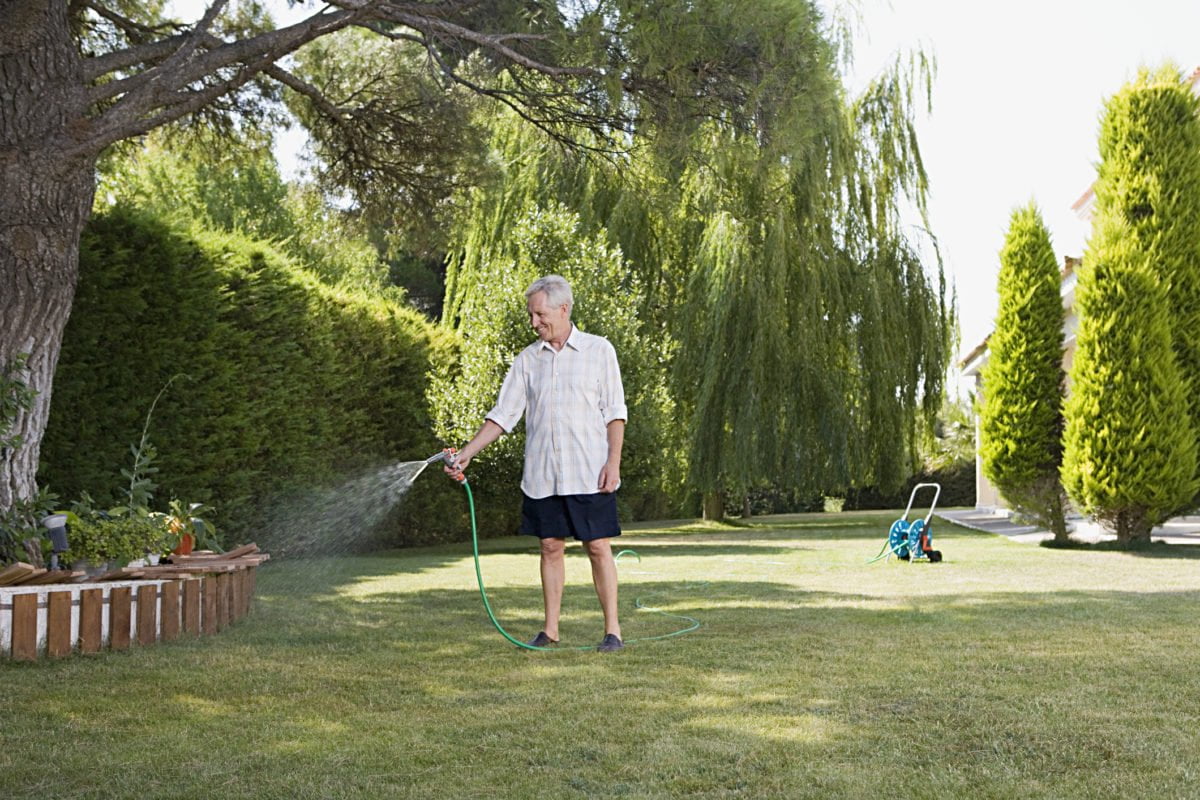As another long and dreary winter comes to an end, we can start thinking about all of the awesome things that we get to do in our yards and gardens. One problem that we need to be aware of when it’s time to work outdoors is ensuring that we are not overwatering. It’s something that may not seem like an issue, but it can happen quickly in spring and cause a real problem for your lawn and garden. In order to maintain your lawn without overwatering, you must pay attention to the effects of doing so and how to fix it. Here are some tips to help guarantee your lawn and gardens get just the right amount of water, so they look amazing all year long.
Can grass really be overwatered?
You might assume that since water is such an integral part of the existence of all living things that there is no such thing as too much. Unfortunately, this isn’t the case. You can saturate your lawn so much that it can’t properly absorb the water, and the grassroots can rot and die. Too much water on your lawn can be the result of humidity, excessive rain or irrigation.
The effects of overwatering
As stated earlier, if your lawn and gardens get too much water, roots of plants and grass can rot and die. Stunted or slow growth, yellowing leaves, and leaf burn are all results of overwatering gardens. Also, overwatering can lead to an abundance of weeds in your lawn, such as crabgrass and nutsedge, which makes weed maintenance a real nuisance throughout the year.
Some good watering practices
If you’re looking to maintain good lawn care and garden care practices, correct watering applications are crucial. When watering your lawn, follow these steps to make sure you’re not overdoing it.
- Do a deep soak 2-3 times per week instead of daily
- Most lawns need at least 2.5 -3 centimetres of water a week
- Water early in the morning if you can
- If the water is spilling out of the lawn onto sidewalks and walkways, you’re doing it for too long
- If you have automatic sprinklers, check that they are working properly and are providing even coverage
- If brown or yellow spots are not being fixed by watering, there is another issue that will need to be addressed. Don’t keep watering these areas.
How to fix an overwatered lawn
So, what can you do to repair a lawn that has been overwatered? The first step is to obviously halt any further watering, whether that be through a sprinkler, hose or irrigation. The next step is to dethatch your lawn. This will help break up the dense material that surrounds the roots of your grass and plants and will increase airflow into the soil. Dethatching can be done with a garden rake and is a chore that should be done a few times a year. Aeration can help an overwatered lawn as well, as it will break up compacted soil and also add much needed air and oxygen into the soil.
If you’re looking for expert lawn care advice from professionals who care, contact Weed-A-Way to get the help that your lawn needs to guarantee it looks its best.

